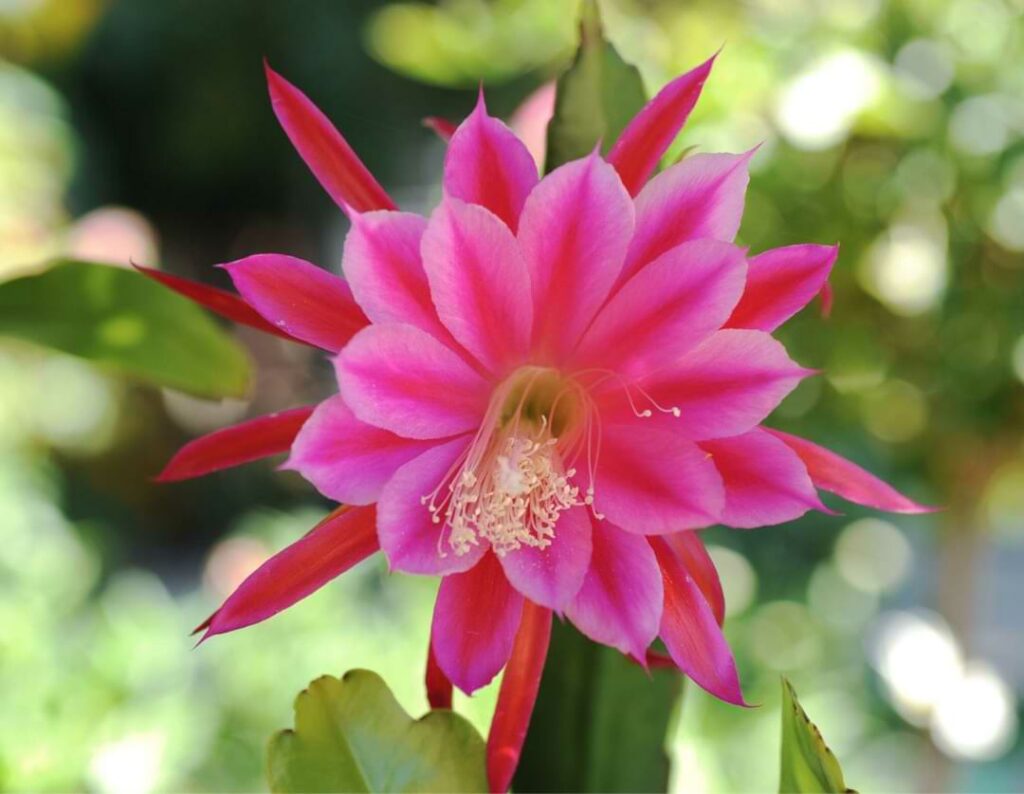Growing an orchid cactus can be a joy. They’re known for their big, cup-shaped blooms that come in a variety of startling colors. Their ornate flowers sometimes last only a couple of days, but they can produce blooms from early winter through spring.
Avid collectors call orchid cacti “epis” for short. The nickname is derived from their scientific name epiphyllum cactus. Most commonly, growers plant orchid cacti in hanging baskets so their leaves and blooms cascade over the pot.
Caring for an orchid cactus is mostly about balancing water, light, and fertilizer needs. The plant has few insect or disease problems, and with proper care, some varieties will produce small, kiwi-like fruit.
Below, we’ve answered some of your most common questions about growing orchid cacti so you can add one to your home garden and enjoy its hearty leaves and unique blooms for years to come.
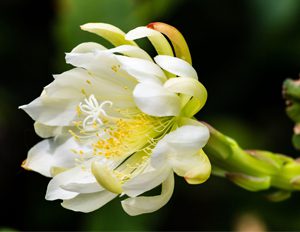
What is the natural habitat of an orchid cactus?
The orchid cactus is found naturally in the tropical rain forests of Central and South America.
Like most orchid types, the orchid cactus is an epiphyte. It grows along tree trunks and branches and derives most of its moisture and nutrients from the air, rain, and debris collecting around it.
Like other air plants and orchid types, the orchid cactus is not a parasitic organism. It uses trees for physical support but does not leech nutrients from its host.
To learn about other epiphytic orchid types that are easy to grow in your indoor garden, click here.
Professional Tip: Indoor epiphyte plants typically benefit from having potting spikes to support them. In many ways, a potting spike mimics the stability of a tree in nature and gives the plant a sturdy surface to support its growth.
What kind of light conditions are best for an orchid cactus?
Like other orchid types, the orchid cactus doesn’t fare well in constant direct sunlight. Its leaves will easily burn if subject to harsh rays.
It’s important to choose a filtered light location for your orchid cactus. Typically, orchid cacti enjoy full morning sun, but they require shelter from direct light come noon.
Professional Tip: If the leaves of your orchid cactus are turning red, your plant is getting too much sun. Move it to an area where it won’t be exposed to direct light all day, or buy a light-filtering curtain to protect your plant from harsh rays.
How often should I water my orchid cactus?
As with most orchid plants, the number-one most common mistake beginner growers make is over-watering. Too much water easily leads to fungus growth, invites pests and gnats, and encourages root rot.
To water successfully, let the growing mix dry between waterings and watch for standing water. It’s also wise to use bottled or de-mineralized water to prevent unfavorable reactions to treated tap water.
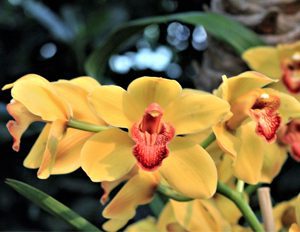
Professional Tip: Use a soil moisture meter to easily monitor your orchid cactus’s water needs. When the meter indicates that the soil is dry, go ahead and give your orchid cactus a thorough drink.
Which pot is best for an orchid cactus?
In their natural habitat, orchid cacti often grow many feet off the ground. They have flattened leaves that dangle nearly 20 inches down.
For this reason, orchid cacti grow best in a hanging basket or on a high shelf. An elevated position will mimic the orchid cactus’s real-life habitat and will allow you to enjoy your orchid’s blooms at eye level.
Professional Tip: Choosing a pot for your orchid can be tough. Your pot should allow for air to reach your orchid cactus’s roots, and it should have plenty of drainage holes. For a complete guide to choosing the perfect orchid pot, click here.
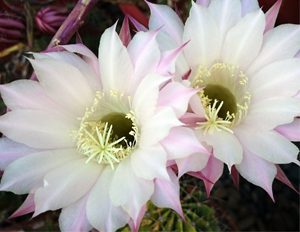
What kind of potting mix should I use?
Use a light, porous potting mix when potting your orchid cactus. In their natural habitat, orchid cacti don’t grow in traditional soil. Instead, they grow along and atop tree branches.
The orchid cactus has a delicate root system that requires air to thrive. Regular soil is dense and heavy, and it will suffocate your orchid cactus’s roots.
Orchid cacti need a well-aerated, well-draining potting mix. Let the mix dry out completely between waterings.
Professional Tip: You can buy a commercial orchid cactus potting mix, or, if you’re on a budget, you can make your own by combining gravel, dried plant fibers, bark, peat moss, and pumice.
When should I repot my orchid cactus?
Orchid cacti usually do well in their pots for 2-3 years at a time. The plants prefer to be slightly pot-bound, so they don’t require frequent repotting, like other orchid types.
When it’s time to repot, choose a pot that’s slightly bigger than the last. Large orchid cacti can often be top-dressed rather than repotted. To top-dress your orchid cactus, simply add a layer of fresh potting mix to its existing pot.
Professional Tip: Avoid repotting your orchid cactus when it’s in bloom. This can result in pot-shock, a condition that shocks the plant’s root system and causes its blooms and buds to drop.
How often does an orchid cactus bloom?
Orchid cacti that bloom during the daylight hours typically flower from late winter to early summer. Night-bloomers typically flower from late summer to early fall.
Interestingly, orchid cacti require 8 to 12 weeks of cool temperatures in winter to bloom. During the winter months, keep your cactus in 40- to 60-degree Fahrenheit conditions and pause your watering routine. Begin watering again when the plant begins to bud.
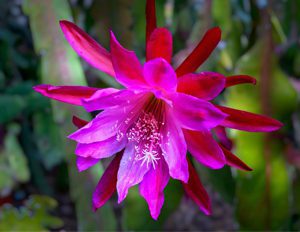
Professional Tip: Our orchid food is specially formulated to nourish your plant with proper nutrients and it’s gentle on your orchid’s delicate root system. Simply add our Premium Orchid Food to your watering routine and watch your orchid cactus grow big, dazzling blooms every flowering season.

